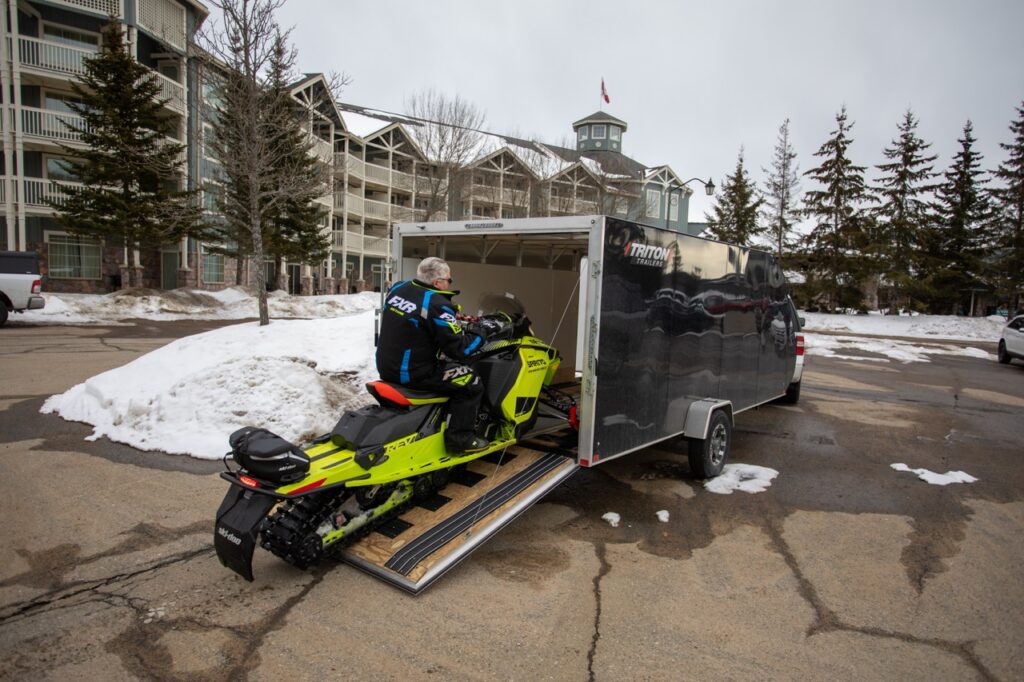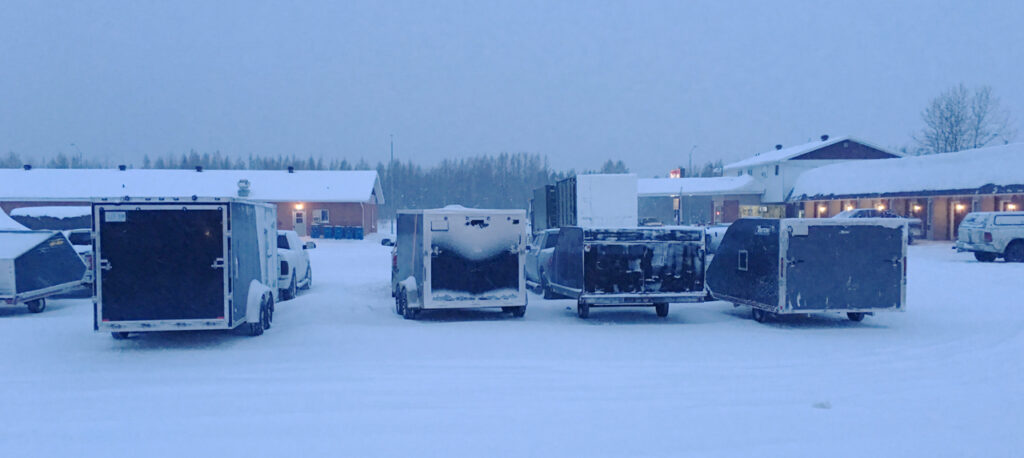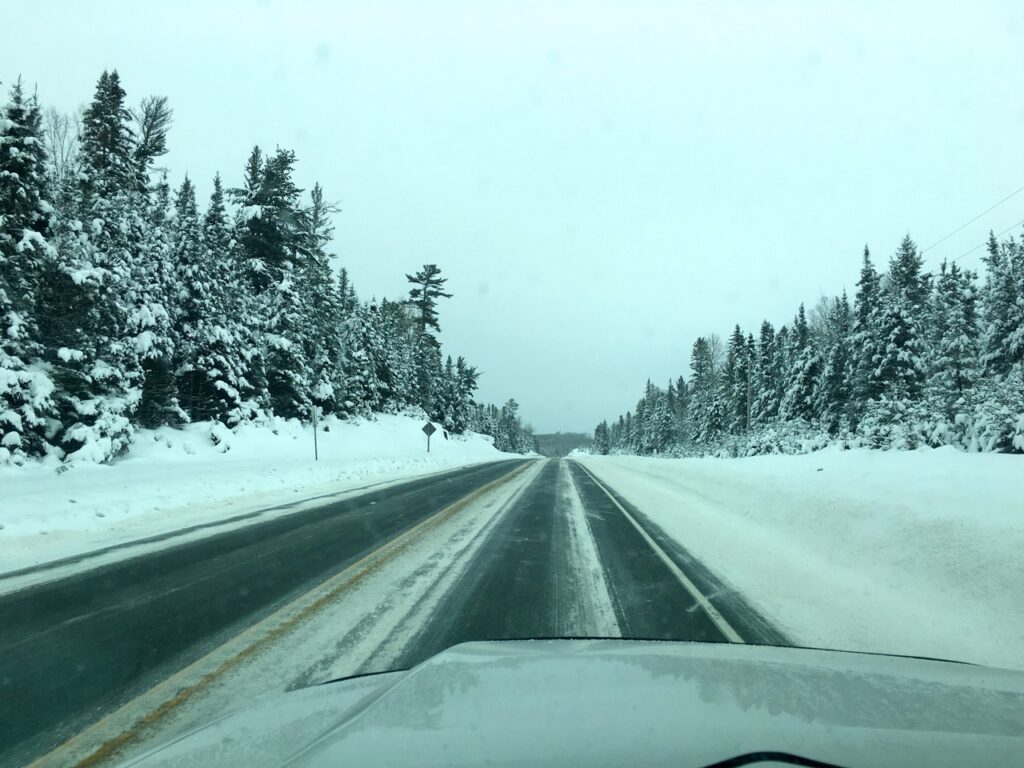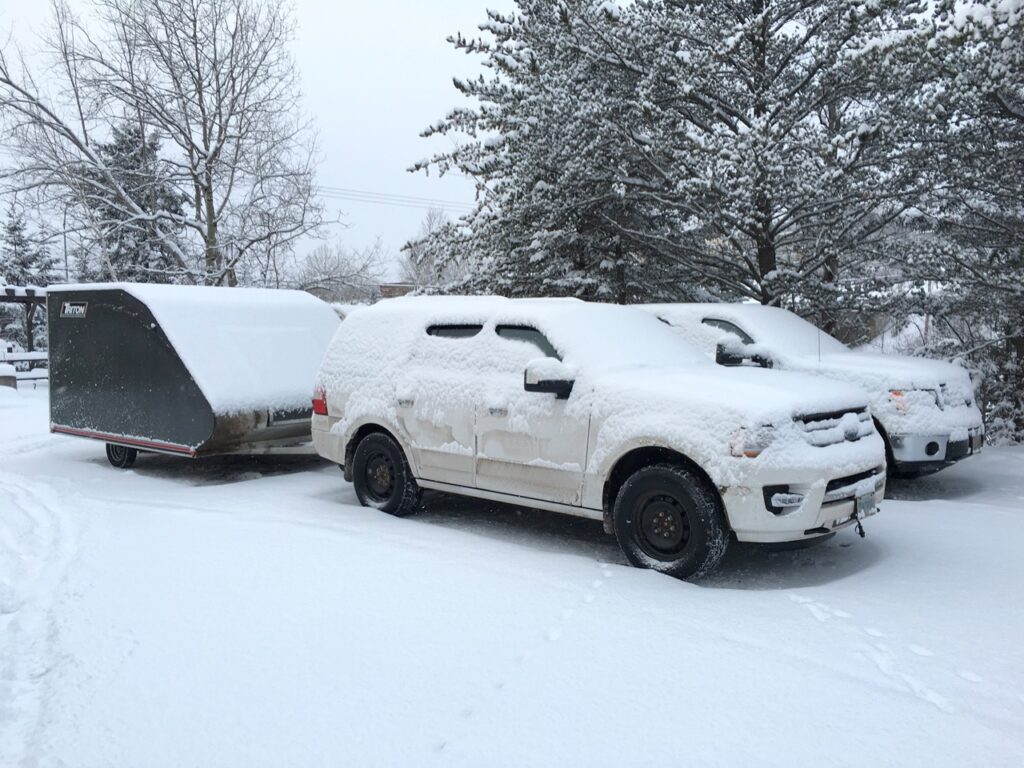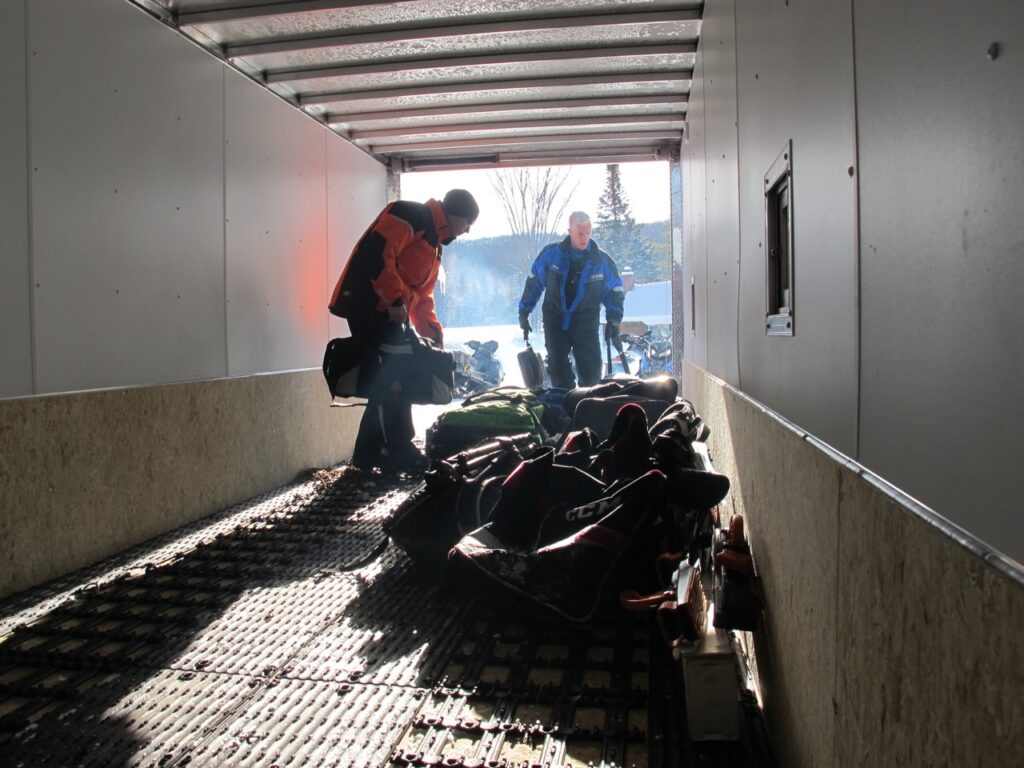Use Before Towing To Avoid Breakdowns…
Related: In Season Trailer Maintenance Tips
What’s this snowmobile trailer checklist for? Any snowmobiler who wants to avoid roadside breakdowns.
With the advent of winter, the steady stream of snowmobile trailers headed to the snow will get underway. But a few don’t make it. They have to pull off on the roadside while frustrated snowmobilers try to get it mobile again. Sometimes a breakdown happens by sheer chance. But more often, it’s a result of some avoidable failure. Or a newbie who doesn’t yet know the trailering ropes – or hasn’t checked out check out my beginners tips.
Best Practices
Prevention starts with buying a good quality trailer with built in reliability and durability. It continues with proper and regular maintenance (including trailer brakes if so equipped) to keep it in great shape. This includes proper summerizing and off-season storage to avoid premature structural or mechanical deterioration.
At the same time, it’s also important never to exceed a trailer’s weight capacity while towing as that places undue stress on critical components that can affect its reliability. And to keep the tongue weight in the proper balance.
Murphy’s Law
However, assuming that these considerations aren’t at issue, Murphy’s Law says that things can still go wrong. Remember that every time you tow any distance, your fully loaded trailer is exposed to the worst driving conditions of the year, including snow, ice, slush, extreme cold and all kinds of salty, sandy road crud.
What’s more, most highways are frost heaved, pot-holed and irregular, while secondary roads can be even worse. So, there is plenty of opportunity to aggravate any pre-existing mechanical trailer issues or even to start new ones.
Walk Around Snowmobile Trailer Checklist
That’s why it makes sense to do a quick walk around inspection of your loaded trailer before embarking on a road trip. To make this as easy as possible, we’ve created this snowmobile trailer checklist. Keep it handy for future reference.
Using this checklist religiously can go a long way to saving you the considerable hassle (to say nothing of expense and disappointment) of a trailer breakdown on route. The checklist assumes that you’re following best practices while towing.This includes properly loading and securing your sleds on the trailer. This way, nothing can come loose that might cause a weight shift resulting in trailer damage or loss of driving control. Having the right winter tires on your tow vehicle helps too.
Being Prepared For Breakdowns
But even this snowmobile trailer checklist is no absolute guarantee of a trouble-free tow. So, if you do breakdown, your ability to remedy the situation easily may depend on having a few items handy.
These include a good pair of work gloves to protect your hands. Also, a tarp or ground sheet to keep you clean and dry if you have to kneel or lie down on the ground. And carry a lug or socket wrench properly sized for your trailer’s wheel lugs. Plus, wood blocks to chock the trailer wheels from moving. Your basic toolkit should also include a pry bar and hammer, heavy duty zip ties, wire and duct tape.
Additionally, be sure to have a fully inflated spare tire mounted on your trailer. And keep a tire pressure gauge in your vehicle. Meanwhile, for hassle-free roadside tire inflation and (sled battery boosting), get a Jump Starter that has a handy air pump attachment. Also, I carry a shovel, broom and snow rake inside my trailer. These enable me to dig out, keep the trailer bed clean, and remove snow load from the roof that can make the rig overweight.
If worse comes to worst, it pays to have a roadside assistance plan that specifically includes transporting your trailer on a flatbed to a repair location. This may not save your snowmobile trip, but at least you’ll be able to go another day!
Snowmobile Trailer Checklist
Note: This list assumes you have previously completed the proper summerizing and off-season storage to avoid premature structural or mechanical deterioration. If not, be sure to check if your wheel bearings need repacking.
- Before hooking up, grip the tow vehicle hitch to make sure it feels solid and secure.
- Use automotive grease to lightly coat the tow vehicle ball before coupling the trailer to it.
- Re-grease your wheel bearings.
- Before plugging in, apply a water-resistant electrical grease to the male electrical connector from the trailer.
- When hooking up, ensure that the trailer coupler is fully down over the tow vehicle ball and properly secured with the pin.
- Make sure the safety chains are in good condition, criss-crossed and properly fastened to the brackets on the tow vehicle hitch.
- Check that the electrical plug is securely connected to the outlet provided on the tow vehicle and that the wire from the trailer tongue won’t drag on the road or get pinched in transit.
- After hooking up, eyeball your trailer tongue to make sure its sitting level (parallel) with the ground to help achieve optimum tongue weight (approx. 10% of gross trailer weight).
- If you have a tongue jack, make sure it’s raised and secure so it doesn’t drag.
- Check the trailer tires for proper inflation, undue tread wear and sidewall cracks (including on the inner side).
- Check that the wheel lugs are all in place and tight. Also, add some Anti-Seize Lubricant to make sure your wheel lugs won’t seize from rust and corrosion if you need to change a flat.
- Inspect the spare tire for proper inflation and good condition and that it’s securely fastened on its carrying bracket.
- Eyeball the springs and axle for any signs of undue wear or damage.
- Eyeball all the trailer lights to make sure each is functioning properly.
- Periodically, lube any trailer hinges or locks with a water-disbursing oil spray.
- Double check that all trailer doors and ramps are securely fastened.
Thanks to Paul McNichol of Alumite Enterprises, distributor of Triton Trailers, for his contributions to this expert article.
The tips and advice in this blog are the opinions of the author, may not work in every situation and are intended only for the convenience and interest of the reader, who has the personal responsibility to confirm the validity, accuracy and relevancy of this information prior to putting it to their own use.

